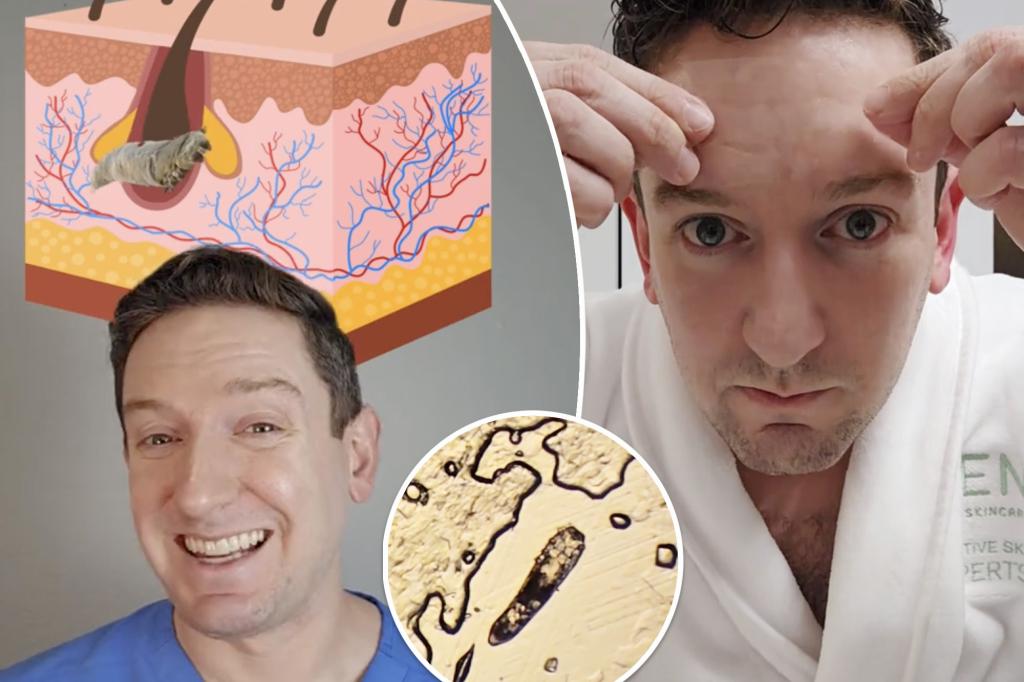Dr. Scott Walter, a board-certified dermatologist in the Denver area, is drawing attention to Demodex, tiny eight-legged mites that live in hair follicles and oil glands on the face, chest, and neck. These mites come out at night to eat dead skin cells and mate, and they can sense light with their primitive eyes. Almost all adults have these mites, with higher prevalence in older individuals and lower prevalence in children under five. Demodex can be transmitted through contact with hair, eyebrows, and sharing personal hygiene products.
There are two species of Demodex that affect humans, with one living mostly in facial hair follicles around the eyelashes and eyebrows, while the other lingers in oil glands. Dr. Walter demonstrated the prevalence of these mites by placing clear packing tape on his forehead and cheeks, finding one mite with a full belly. These mites do not defecate as they do not have an exit, so they continue eating. Demodex have a short life span of about two weeks, laying their eggs inside follicles or oil glands, which hatch and develop into adults in a week.
Although most people do not experience symptoms from Demodex and are unaware of their presence, they have been linked to skin conditions such as rosacea, acne, dermatitis, vision problems, and damage to eyelids and eyelashes. Mark Sandeman, an honorary professor at Federation University Australia, recommends seeing a doctor if experiencing eyelid inflammation. Limiting mite numbers through prescribed treatments by a medical professional can help control reactions to Demodex, as entirely getting rid of these mites is likely impossible.
The fact that Demodex mites are present on almost all adults raises awareness about the need to understand and manage their presence to prevent potential skin conditions. While most people are unaware of these mites and their activities, they can impact various skin and eye-related issues. Seeking medical advice when experiencing symptoms related to Demodex can help in managing their presence and the associated reactions. It is essential to educate individuals on effective ways to limit Demodex numbers and prevent potential complications caused by these tiny mites. Knowledge about Demodex and their effects can lead to better prevention and management strategies for maintaining skin and eye health.


